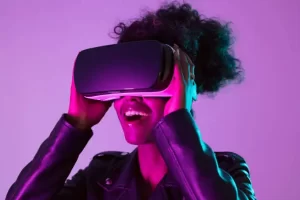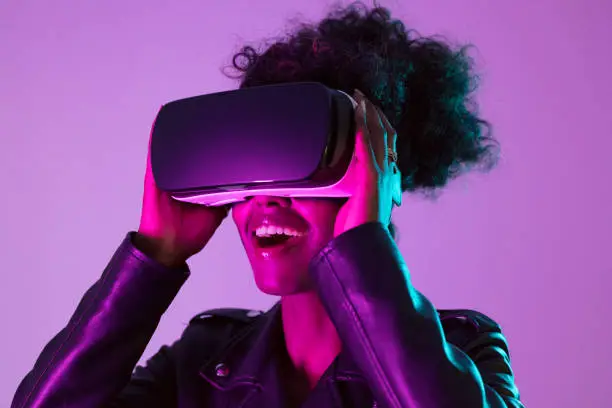-

Virtual Reality (VR) has been a buzzword for years, often associated with futuristic movies and high-tech gaming. But today, VR is more than just a concept; it’s a rapidly evolving technology with the potential to revolutionize various aspects of our lives. In this blog post, we’ll explore the depths of VR, from its definition and history to its applications, benefits, limitations, and future expectations.
What is Virtual Reality?
At its core, Virtual Reality is a computer-generated simulation of a three-dimensional environment that can be interacted with in a seemingly real or physical way by a person using special electronic equipment, such as a helmet with a screen inside or gloves fitted with sensors. The primary goal of VR is to provide an immersive sensory experience that can include sight, touch, hearing, and even smell.
Facts and Figures
- Market Growth: The global VR market size was valued at USD 15.81 billion in 2020 and is expected to expand at a compound annual growth rate (CAGR) of 18.0% from 2021 to 2028.
- User Base: By 2024, the number of VR users worldwide is projected to reach 171 million.
- Investment: Major tech companies like Facebook (now Meta), Google, and Microsoft are heavily investing in VR technology, indicating its significant potential and expected growth.
Advantages and Benefits
- Immersive Learning: VR provides a dynamic, immersive experience that can accelerate learning and enhance understanding.For instance, medical students can practice surgeries in a risk-free virtual environment.
- Realistic Simulations: VR can replicate real-life scenarios accurately, providing a safe space for training and practice.Pilots, for example, can train in various situations using VR without the associated risks.
- Enhanced Accessibility: VR can make experiences and locations accessible to individuals who might otherwise be unable to access them due to physical, financial, or logistical constraints.People can tour museums, explore foreign countries, or attend concerts from the comfort of their homes.
Limitations
Despite its many advantages, VR also has its limitations:
- High Cost: The equipment required for a high-quality VR experience can be expensive, making it less accessible to the general public.
- Technical Challenges: Issues such as motion sickness, latency, and the need for high processing power can hinder the VR experience.
- Limited Content: While the amount of VR content is growing, it is still limited compared to traditional media.
Applications
VR is being used in a variety of fields, each harnessing its potential in unique ways:
- Education and Training: From medical training to military simulations, VR provides a safe and controlled environment for learning and practice.
- Gaming and Entertainment: VR offers immersive gaming experiences and is increasingly being used in movies and storytelling to draw viewers into the narrative.
- Therapy and Rehabilitation: VR is used to treat conditions like PTSD, anxiety, and phobias by allowing therapists to expose their clients to triggering situations in a controlled manner.
- Real Estate: Potential buyers can take virtual tours of properties, saving time and resources.
- Healthcare: Surgeons can practice complex procedures, and patients can undergo virtual therapy sessions.
Future Expectations
The future of VR looks promising, with continuous advancements in technology and increasing adoption across various industries. Here are some trends to watch:
- Improved Hardware: As technology advances, VR hardware will become more affordable, lighter, and more comfortable, enhancing the user experience.
- Expanded Applications: VR will continue to find new applications in fields like education, healthcare, and remote work, making it an integral part of our daily lives.
- Social VR: Platforms like Meta’s Horizon Worlds are paving the way for social interactions in virtual environments, potentially transforming how we connect and communicate.
Conclusion
Virtual Reality is no longer a distant dream but a tangible reality with immense potential. From revolutionizing education and training to providing new forms of entertainment and therapy, VR is set to change the way we interact with the world. As technology continues to evolve, the possibilities for VR are endless, promising a future where the line between the virtual and real worlds becomes increasingly blurred.
Whether you’re a tech enthusiast, a business owner, or just curious about the future, keeping an eye on VR developments is essential. The journey into the virtual world has just begun, and it’s bound to be an exciting ride.





























